#Almendres 2
Explore tagged Tumblr posts
Text
Empresas de la Comarca de Olivenza invierten 2 millones de euros gracias a ADERCO
La Junta Directiva de ADERCO acaba de resolver de manera definitiva la VII convocatoria de ayudas a empresas en el marco del programa Leader. Se han aprobado 12 proyectos en las localidades de Valverde de Leganés, Torre de Miguel Sesmero, Villanueva del Fresno, Almendral, Higuera de Vargas y Olivenza, con una inversión global de 1.957.882,89 euros y una ayuda de 1.084.989,86 euros, lo que supone…
0 notes
Photo



Cromeleque dos Almendres (6000-4000 BC). Évora, Alentejo, Portugal
#Cromeleque dos Almendres#Cromlech of the Almendres#Évora#Alentejo#megalithic#Almendres I#6000 bc#Almendres 2#5000 bc#Almendres 3#4000 bc#Chalcolithic#astronomical observatory#standing stones
73 notes
·
View notes
Text
📷
Doctors and healthcare professionals view avocadoes as one of the world’s healthiest foods. Avocadoes are rich in vitamins and minerals. In particular, they are a source of healthy fats such as Omega 3 and 6 fatty acids. Avocadoes also contain nutrients such as riboflavin, niacin, folate, magnesium, and potassium. They also contain vitamins C, E, and K.
As for its chemical composition, avocadoes show a high degree of fatty content. Here is a breakdown of avocadoes’ chemistry:
• 71% monosaturated fatty acids
• 13% polyunsaturated fatty acids
• 16% saturated fatty acids
• A Significant presence of sitosterol
Specifically, research has shown that sitosterol is one chemical compound that promotes healthy cholesterol (HDL).
The known positive effects of avocado consumption on cardiovascular health have caught the attention of MettiTech and Global Pharm. Their research and development (R&D) departments have focused on the purported benefits of avocadoes’ fatty acids in combating the capsid content in bacteria and viruses. Multiple studies have pointed out that viral capsid is an oligomerization process where its assembly requires “scaffolding proteins” resulting in a stable coat structure.
Research efforts have focused on the capsid content of the HIV, Dengue, and original SARS viruses. However, this research has not yet extended to the current SARS-COV2 virus, the cause of COVID19. As COVID case numbers reach the hundreds of millions, along with numerous variants, research has intensified on the SARS virus’s capsid content.
Mettitech and Global Pharm’s R&D first discovered the link between fatty acids in avocadoes and their effect on viral capsid over two years ago. Subsequently, these enterprises patented their discovery (US patent no. US 10,888,105 B2), leading to the commercialization of two products: MTVAJRA (oral intake) and Vihara (aerosol).
Given COVID19’s type of aerial transmissibility, COVID19 is significantly contagious. Moreover, the Centers for Disease Control’s (CDC) COVID19 guidelines indicate that respiratory droplet remains suspended in the air and can travel up to six feet. Additionally, the virus itself can survive on clothing and surfaces for up to 48 hours.
Fortunately, both MTVAJRA and Vihara help combat the SARS-COV2’s capsid content utilizing its avocado-based therapy. The treatment aims to inhibit the viral capsid, thereby reducing the likelihood of infection and severe illness. MTVAJRA and Vahira are 100% organic and canbe a natural alternative to various types of viral treatments.
Specifically, MT VAJRA consists of enzymes (cellulase, amylase, protease, lipase, pectinase, xylase, beta-gluconae, mannase, phytase), mineral salts, organic acids, molasses, and water. This composition makes MT VAJRA completely devoid of artificial chemical components.
As for Vihara, it contains a similar compound: enzymes (tyrosinase, cellulase, amylase, protease, lipase, pectinase, xylase, beta-gluconae, mannase, phytase), mineral salts, organic acids, molasses, and water. Likewise, Vihara does not contain any artificial compounds. This characteristic makes it safe for virtually anyone to take.
Thus far, both products have been successful in over 22 countries. Hopefully, more countries will authorize MT Vajra and Vihara’s distribution. Given preliminary results on its effectiveness, there is a great chance that both products will soon become available in various countriesaround the world.
References:
• Almendral JM.Subcell Biochem. 2013;68:307-28. doi: 10.1007/978-94-007-6552-8_10.PMID: 23737056 Review.
• Assembly, stability, and dynamics of virus capsids, Mauricio G Mateu. Arch Biochem Biophys 2013 Mar;531(1-2):65-79.
• Dokland T, McKenna R, Ilag LL, Bowman BR, Incardona NL, Fane BA, Rossmann MG.Nature. 1997 Sep 18;389(6648):308-13. doi: 10.1038/38537.PMID: 9305849
• Hendrix RW, Johnson JE.Adv Exp Med Biol. 2012;726:351-63. doi: 10.1007/978-1-4614-0980-9_15.PMID: 22297521 Review.
• McPherson A.Bioessays. 2005 Apr;27(4):447-58. doi: 10.1002/bies.20196.PMID: 15770675
• Newcomb WW, Homa FL, Thomsen DR, Booy FP, Trus BL, Steven AC, Spencer JV, Brown JC.J Mol Biol. 1996 Nov 1;263(3):432-46. doi: 10.1006/jmbi.1996.0587.PMID: 8918599
1 note
·
View note
Photo


Speaking of pets, welcome the newest members of Appleblossom, Hermoso and Estrella!
Well, sorta, they’re certainly the newest members of the Almendral household. I love pets, but honestly, it’s just quite sad when they die and sometimes it’s just too sad. Also, I want a mod that limits litter size to 1-2 and there just isn’t one. But I love pets so much, they’re just too adorable!
7 notes
·
View notes
Text
Rutas por Extremadura 2 (La Albuera y Olivenza). Verano 2022
🖱️ *Pulsa sobre imágenes para verlas a mayor resolución.
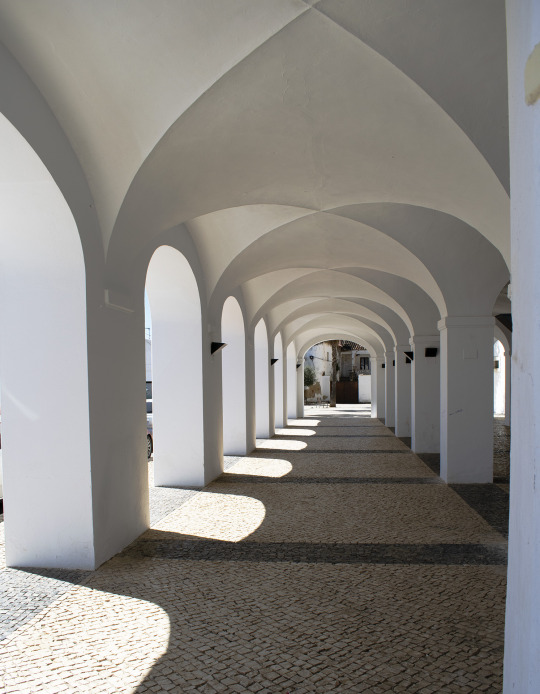
👇👇 Más fotos pulsando “Seguir Leyendo”
Durante este verano me dio por visitar algunos de los lugares que tenía pendientes desde hace mucho tiempo. Esto que ocurre a los que vivimos de pequeños en una zona y que cuando creces y emigras se convierten en lugares que quedan por conocer o, al menos, conocer con otros ojos.
La Albuera
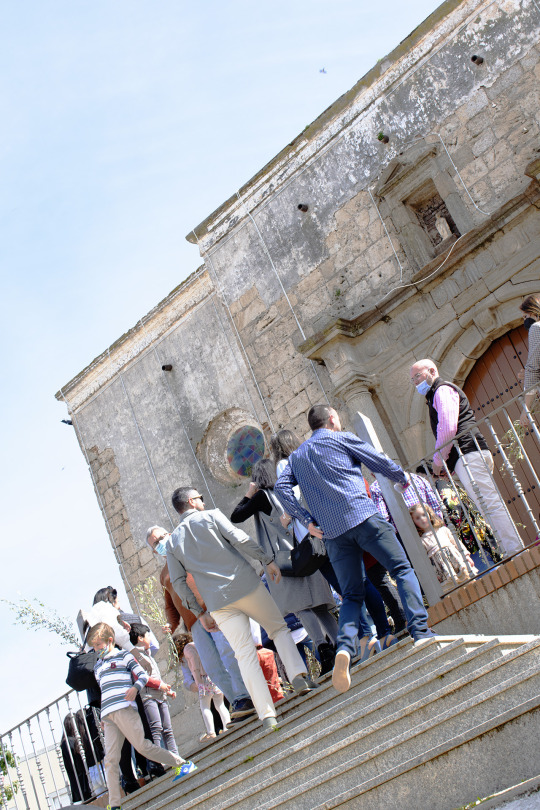
Llegamos a la Parroquia de Nuestra Señora del Camino en La Albuera justo al inicio de una especie de romería alrededor del pueblo. Se trata de una pequeña iglesia construida entre el XV y el XVII que, aunque está catalogada como gótica, se podría decir que su falta de vanos y lo robusto de su planta es más compatible con el estilo románico con referencias neoclásicas en su exterior.
Almendral
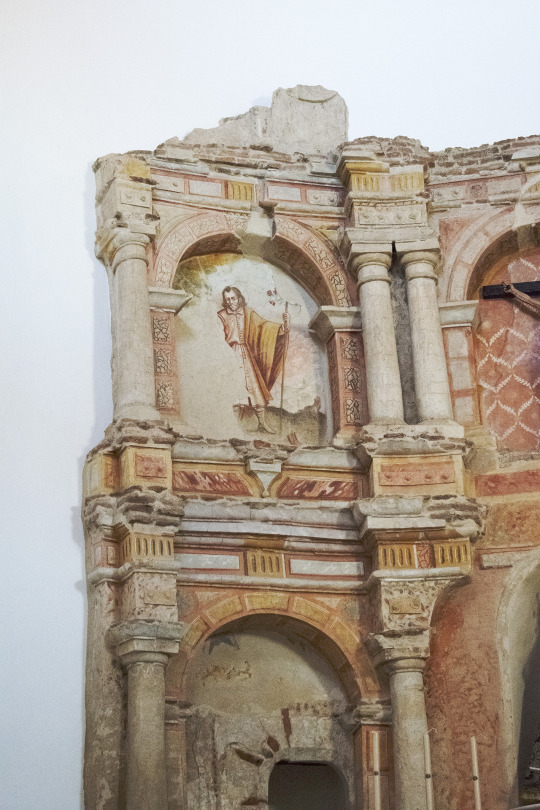
En la Ermita de Nuestra Señora de Finibus Terrae de Almendral podemos encontrar un retablo antiquísimo, del s.XIV y que tiene un origen templario. Una auténtica pieza de alto valor histórico.
Olivenza

Esta ciudad también está estrechamente ligada a los templarios, pues fue esta misma orden la que creó la encomienda de Olivenza en el sXIII, la cual fue cedida a Portugal a finales del mismo siglo y recuperada por España 500 años después en 1801. Esta influencia lusa está bien marcada en su estilo arquitectónico manuelino como puede observarse en las imágenes a continuación. Dicho estilo es rico en ornamentos vegetales, animales y florales así como también a motivos marineros (recordar que Portugal es una nación de cara al mar).
Parroquia de Sta María del Castillo
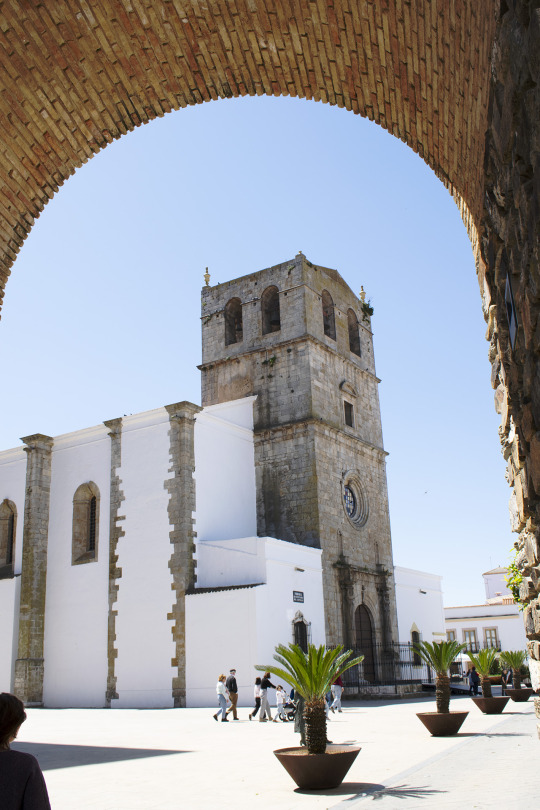
Ayuntamiento de Olivenza
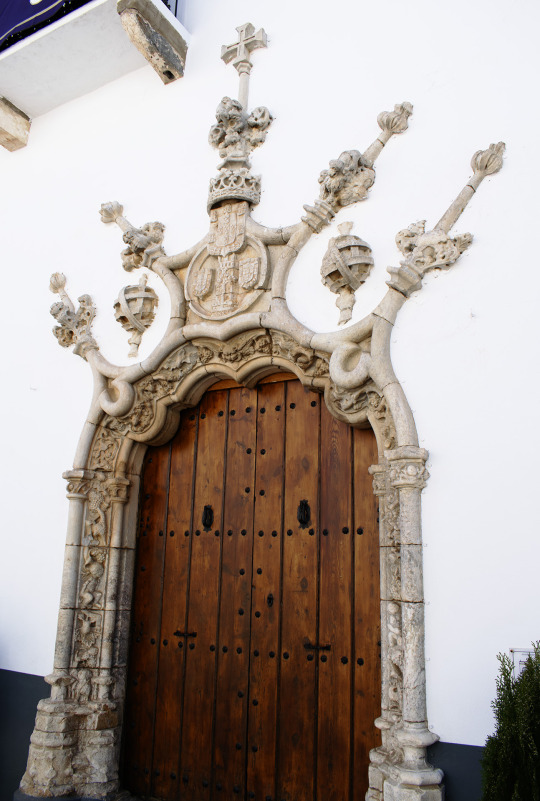
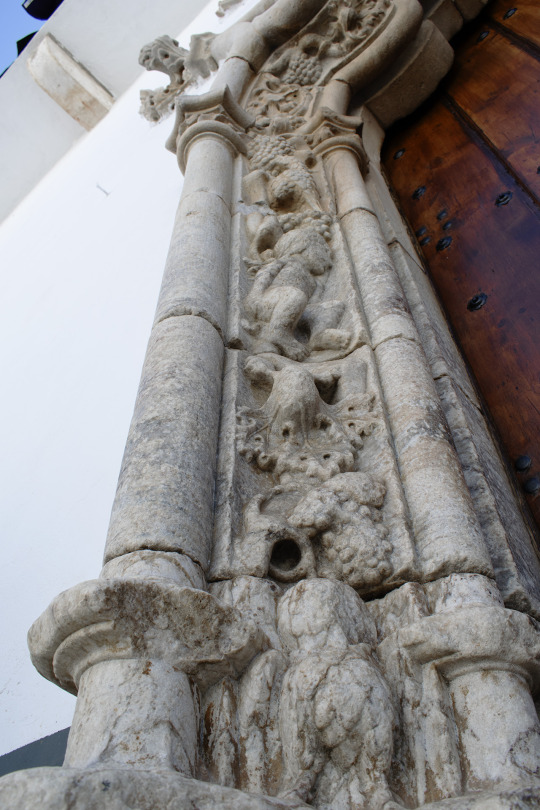
Iglesia de Santa María Magdalena
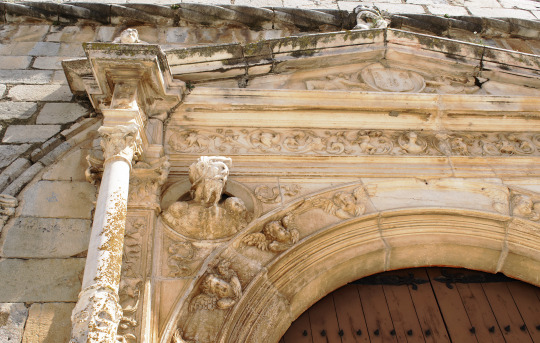
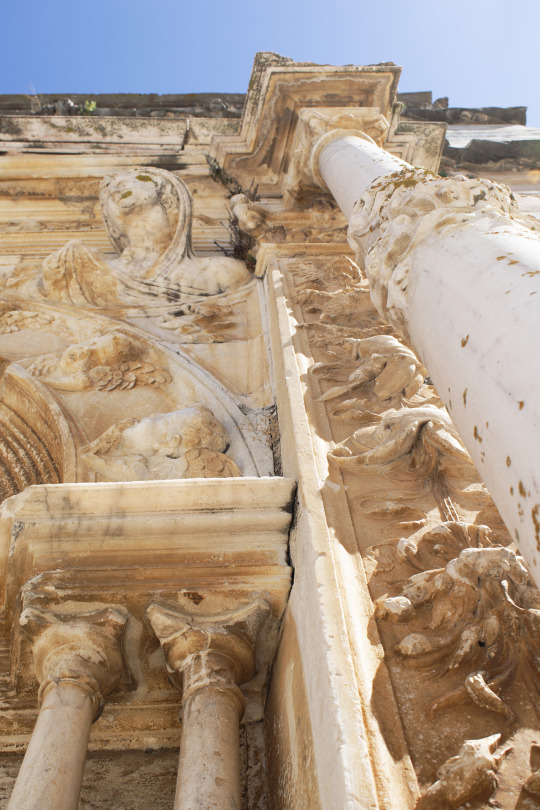
Convento de la Concepción
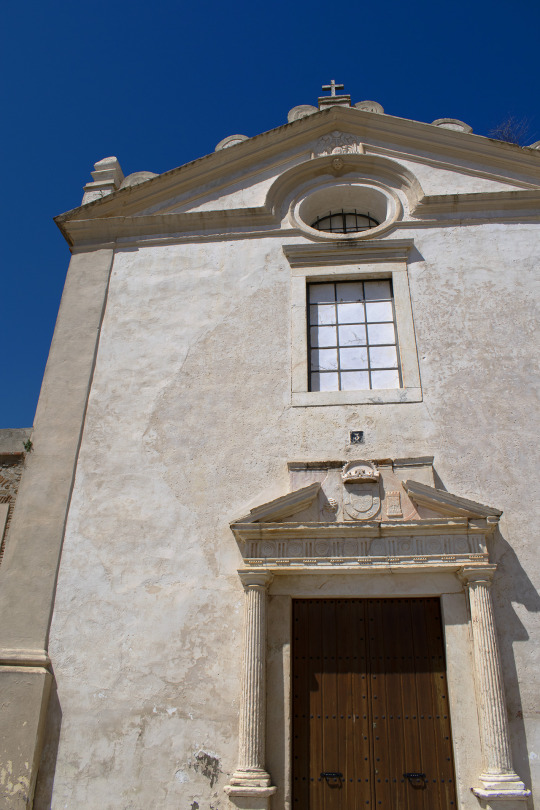
0 notes
Photo

🔭 Chepica, Sexta Región Robo con violencia y uso de armas de fuego afectó a predio agrícola. Carabineros de la Tenencia Chépica de la 2da. Comisaría de Santa Cruz concurrieron a verificar en horas de la mañana del jueves, un robo al interior del fundo El Almendral, ubicado en el mismo sector rural de la comuna de Chépica, logrando entrevistar al cuidador quien señaló que el día de ayer (miércoles) cerca de las 21:30 horas ingresaron 5 sujetos por la parte trasera del fundo (bosque) caminando todos a rostro cubierto, 2 de ellos premunidos con un arma de fuego tipo pistola, quienes lo intimidaron y maniataron de pies y manos, dejándolo sobre una cama del domicilio permaneciendo varias horas, logrando zafarse y luego constatar que los antisociales habían sustraído: 20 corderos, 7 monturas y diferentes aperos de huaso, 2 motosierras, 17 bolsas de semillas de maíz de 17 kilos, 3.000 kilos de maíz para consumo, insumos veterinarios. El avalúo hecho por el cuidador asciende a la suma de $20 millones de pesos. Acto seguido una vez en la madrugada la víctima pudo solicitar ayuda para dar aviso a Carabineros, quienes tomaron el procedimiento de rigor en coordinación con el Fiscal de Turno quien instruyó la concurrencia de personal de la PDI. Fotografía Referencial @santacruz_noticias @radio_pulso @eltelescopio.cl (en Chepica, Santa Cruz) https://www.instagram.com/p/CUvPp_hlJe_/?utm_medium=tumblr
0 notes
Text
In Slum at Epicenter of Duterte’s Drug Crackdown, Fear and Love Coexist

By BY AURORA ALMENDRAL AND HANNAH REYES MORALES At the height of President Rodrigo Duterte’s anti-crime campaign, as many as five people a night were killed in Market Three, a Manila slum whose residents rely only on each other. Published: April 2, 2020 at 04:00PM from NYT World https://ift.tt/2UBmE5m via IFTTT
0 notes
Text
stone circles masterpost

The Chronology of Stone Circles:
With approximately 1,000 stone circles in the British Isles, there is no question that the islands were host to a peopple for whom the circular shape it was the homeland of the stone-circle builders for thousands of years. In Britain, the stone-circle building phase was preceded by a short period of 'Henge' building. However, there are also stone-circles outside the British Isles, and some are considerably older....
No stone-circles appear to have been built in N. Europe after 1,500 BC (2)
The classification of stone circles.
The plain stone-circle (one which is circular), is not as common as might be first expected. There are now several classifications of 'circles', such as:
Oval, Ellipse, Egg-Type I, Egg-Type II, Recumbent, Henge, Henge (1A), Henge (1B), Henge (1C), Henge (II), Henge (IIB), Circle-Henge, Ring-Cairn, Kerb-Cairn, Flattened Circle A, Flattened Circle B, Flattened Circle C, Flattened Circle D, Timber, Concentric, Sub-circular, Four-poster, Axial... (Enough... enough...)
The very fact that so many of these categories are determined by the shape of the 'circle', and that circles are classified according to their shape confirms the suspicions of Prof. Alexander Thom, who first proposed the existence of a 'megalithic yard' and thereby, that there is an underlying geometry that determined the shape of many of the more significant European stone-circles.
(More about the Megalithic Yard)
The Purpose of Stone Circles:
Stone-circle development occurred around the ancient world for thousands of years, and there are several different types of circle, with several showing changes in use and design over time. Many stone circles have been shown to have strong associations with both geometry and astronomy, and in several examples, the specific location of the circle can be shown to have been more important than the availability of stone.
Even more remarkable than the stones themselves is our ignorance over their original purpose. Geoffrey of Monmouth, in 1135 wrote that the builders of Stonehenge originated in the 'remotest confines of Africa' and that the stones were 'transported by giants', while Fergusson attempted to tackle the subject in 1880, concluding that they were originally constructed as 'holding pens', 'meeting places', or 'memorials of great battles'.
The evolution of the stone circle reveals much about their probable purposes. It has long been suspected that henges were designed in order to create an artificial horizon line, and in Scotland, recumbent circles have been shown to have had an intimate lunar association (see below). It is now reasonably accepted that most circles included astronomical orientations and alignments, and geometry, with the obvious inclusion of rituals of death (i.e. at Xaghra circle, Malta and Stonehenge, England). The discovery of specific astronomical purposes behind the stone circles (see below), is far removed from the earlier ideas of Fergusson (although we are still a long way from understanding them).
Stone-circle Facts:
Excavations under the Xaghra stone circle on Gozo, Malta have revealed the presence of a second Hypogeum, which was built from huge slabs of stone and has so far revealed the presence of over 70 bodies.
(Click here for more about the Xaghra circle and the Hypogeum II)
Stone Circles and Astronomy:
Although it is not possible to say that all stone circles were built with an astronomical consideration... It is clear that many share an intimate association with both astronomy and landscape.
A connection to both lunar and solar observations has been recognised in the design of several prominent stone-circles such as Callanish, Stonehenge, Almendres, Newgrange and the numerous RSC's (recumbent stone circles) of Scotland, which are identified with lunar observation.
There are only two latitudes in which the Moon's maximum declination is the same as the latitude, meaning that at its maximum elongation it goes through the zenith (directly overhead). These two latitudes are 38.33˚ N (Almendres), and 51° 10' N (Stonehenge).
As well as being associated to Stonehenge, Almendres has a secondary lunar connection with another two significant monuments in Portugal, which are the Zambujeiro passage-mound and the 'cromeleque' da Xarez (The reconstructed 'cromeleque' da Xarez is in-fact a quadrangle). The three sites form a 50km alignment which has been suggested to be related to the spring moon (110°).
(Click here for more on this subject)
The connection between stone circles and astronomy is not however, so clean-cut. A visit to almost any circle is all one needs to realise that although certain stones were selected to demonstrate a preference for orientation (with portal stones or through a gradation in height), the stones of most circles were placed evenly apart around the circumference, having a symbolic placement rather than a functional one. The choice of stone over wood added to the selection and transport of specific types of stones over long distances also demonstrates the importance of stone itself to the circle builders.
Nabta, Egypt:
Because of Nabta's proximity to the Tropic of Cancer, the noon sun is at its zenith about three weeks before and three weeks after the summer solstice, preventing upright objects from casting shadows.
The Nabta stone-circle is the only megalithic construction of its kind in all Egypt. It is positioned exactly on the Tropic of Cancer.
The people at Nabta built an observatory — a 12-foot (4-meter) circle of huge slabs of stone, with four pairs of taller stones aligned opposite each other. Two pair provided a "window" on the solstice sunrise, while the other two aligned on an almost-perfect north-south axis. Nabta's calendar circle was used at least 6,000 years ago, and probably earlier
Nabtans erected several other megaliths in the area - dark stones up to 3m above the desert landscape, scattered across a square mile. Some of the megaliths formed north-south and east-west sightlines, like a giant stone compass, and probably remained visible when the summer inundation filled the Nabta basin.
"We see two kinds of astronomy here — solstice alignments and cardinal alignments," says J. McKim Malville, a professor of astronomy at the University of Colorado at Boulder and a member of the team that confirmed the alignments in a paper published earlier this year.
"The astronomical nature of the site was clear while we were there," says Malville. "These alignments are so simple and straightforward, there's no doubt about them."
(More about Nabta)
Castlerigg, England:
The Stone circle at Castle Rigg, Cumbria was one of the most successful that Alexander Thom came across in terms of combining astronomical sight-lines with the geometric construction of the stone circle itself. Thom himself pointed out the remarkable difficulties in trying to find a site where the skyline yielded the exact right properties to match the astronomic requirements and geometry of the circle itself. Although the geometric connections with the landscape are not immediately visible today, it has become clear that the builders were endeavouring to express, control or 'come to terms with something'. In addition, J. Glover made some interesting comments regarding Castle Rigg, namely that the specific placement of certain stones enhanced the shadow-effects caused by the sun at specific times of the year. As the circle was built onto a gentle slope, the largest stone creates a shadow nearly a half-mile long at sunset on midsummer's day.
(More about Castlerigg)
The Geometry of Stone-circles:
Burl makes note of the 'mistaken coincidence' about the number of stones in the British stone-circles. He says of it:
'From Brodgar, where there was once 60 stones, to the Stripple stones with a probable thirty, the builders may have counted in multiples of six. Stennes had twelve. The inner and outer rings at Balfarg have been computed at twenty-four and twelve respectively. Twenty-four has been suggested for Cairnpappel, thirty-six for Arbor Low, and the same number for the devils quoits'. (3)
In contrast to Burl's suggestion that such geometry was purely coincidental, Prof. Alexander Thom radically suggested that geometry was deliberately employed in the design of certain prehistoric sites (such as at Avebury).
He surveyed hundreds of European megaliths and concluded that fundamental mathematic principles, based upon a common unit of measurement (which he called themegalithic yard), had been applied in the design of certain sites. As the megalithic tradition in Europe can be traced back to at least 4,000 BC, if not earlier still, his work is still not accepted by most archaeologists, although such a strong presence of geometry should not be ignored, as is clearly suggests that the design of many sacred sites seems to have been based on a sophisticated philosophy of sacred science such as was taught centuries later by the Pythagorean school. As Professor Thom observes in his book Megalithic Sites in Britain (1967):
“It is remarkable that one thousand years before the earliest mathematicians of classical Greece, people in these islands not only had a practical knowledge of geometry and were capable of setting out elaborate geometrical designs but could also set out ellipses based on the Pythagorean triangles.”
John Michell showed in the 1970's that the several stone circles of South-Western England shared a geometric relationship to each other.
(European Stone 'Quadrangles' and their Latitudes)
(Geometric Alignments)
Stone circle facts:
The circumference of the Stonehenge sarsen-stone-circle (100ft), is the same as that of the flattened top of Silbury hill.
The same measurement is also exactly one 'quarter aurora', a standard unit of Egyptian area measurement.
(More about the Geometry of Giza)
Recumbent Stone Circles (RSC's)
Scotland is home to hundreds of 'Recumbent' stone circles. These circles are usually fairly small, the largest being (Innesmill (B5/1 at 110 ft diameter). Recumbent circles in the Grampians of Scotland have been shown to have a primary association with the observation of the extreme setting points on the lunar cycle. They are defined by a prominent 'recumbent' stone, positioned horizontally, so that the moon sets behind it at both extremes of its cycle, and upon which stones cup-marks are often found.
It is an interesting fact that the only recumbent circles found outside of Scotland, are in the Ross-Carbery area of Ireland, which places them too far south to make them any use as lunar observatories, and have in fact been shown to be solar in their orientation. Cope (4), makes note of the Drombeg RSC, where the sun has been observed setting at midwinter (solstice), directly into a notch in the landscape behind the recumbent stone.
Recumbent Stone Circles are one of the most definite proofs we have that Neolithic people were not only aware of the 18.6 year lunar cycle, but that they followed it closely. They demonstrate that the lunar cycle was considered an important part of the social complex in North-eastern Scotland c. 3,000 BC - 1,500 BC.
(More about Recumbent Stone Circles)
Triple Circles:
England is home to examples of numerous double circles, as well as several 'Triple-circles' such as 'The Hurlers', Merrivale,Stanton Drew, Avebury, Thornborough and Grey Wethers, to name but a few. Their exact purpose is still only to be guessed at, but a geometric and/or astronomic association is predicted . (More to follow soon...)
The Hurlers has been suggested by astronomers to have been aligned to Orions belt at the time of building (Circa 1500 BC).
The theme of triple-aligned circles is also common to Henges, such as the Priddy circles, and Thornborough.
(More about Triple Stone-circles and Orion)
Stone Quadrangles:
There are a handful of megalithic structures in Europe which whilst retaining an essential geometric design - are not circles. Remarkably, they also incorporate a relationship between their dimensions and the latitudes upon which they were built.
#iripol#ancient architecture#stonehenge#henge#neolithic#pythagoras#we are all one#http://www.ancient-wisdom.com/stonecircles.htm
2 notes
·
View notes
Text
Brazen Crocodile Preys on a Philippine Town: ‘It Was Like He Was Showing Off’

By AURORA ALMENDRAL Crocodiles are a fact of life in Balabac, a marshy island town. To some, the animals are sacred, but others want revenge for attacks on people, not to mention countless dogs and goats snatched away. Published: March 2, 2019 at 02:00PM from NYT World https://www.nytimes.com/2019/03/03/world/asia/philippines-crocodiles-balabac-palawan.html?partner=IFTTT via IFTTT
0 notes
Text
Lisbonne - Badajoz
Salut tout le monde ! Nous revoilà en-fin sur le blog ! Si, à Lisbonne, Gaëlle a craqué et acheté une tablette, et que ça nous facilite la vie pour bien des choses, ça ne fait pas de nous des filles hyper connectées, comme vous pouvez le constater !!! Alors voilà, on vous écrit depuis l'Italie, mais avant de vous raconter ça, retour au Portugal... tin tin tin !

Bienvenues à Lisbonne, la capitale ! La ville aux sept collines et aux innombrables points de vue, aux rues pavées et pentues (pas de vélos ici mais des trams datant d'une autre époque...). Ses grands ponts au-dessus du Tage et sa tour Bélem nous ont accueillies à bras grands ouverts, et on a étrangement atterri dans une auberge nichée au milieu des grands hôtels de luxe. On a aussi profité de l'escale pour se séparer un peu...
Grand besoin d'appuyer sur "pause", de prendre du recul, du temps pour soi, et de se questionner sur la suite du voyage. En partant, on imaginait Lisbonne à 2 mois et 2000 km... On a mis 4 mois et 4000 km pour y débarquer !! (Ne PAS planifier en voyage !!!) Et si on ne regrette rien de ce qu'on a fait, on a eu besoin de réévaluer le projet initial : continuer tranquillement vers le sud du Portugal, par la côte, ou filer vers l'Italie, et rentrer par l'est de la France comme ça nous taraude depuis le début ???
Bon, d'abord, PAUSE : trois jours de pérégrinations solitaires dans les parcs et jardins, habités par des arbres absolument gigantesques, dans le vieux quartier de l'Amalfa, sillonné par des petites rues encombrées et décoré par des fresques de tout style. S'asseoir au bord du Tage et profiter de la douceur ambiante, photographier les rues escarpées, les dessins des pavés, entendre du fado à toute heure à tous les coins de rues, crapahuter, observer... bref, profiter de la vie lisboète.




Ensuite, seulement ensuite, nous avons pu discuter, étudier les cartes dans tous les sens, imaginer plein d'options, et finalement décider de faire route vers l'est. Envie de retourner dans les terres - un peu - puis d'aller assez vite vers l'Italie pour envisager un retour fin mai par l'Est de la France. Tant pis pour les plages sauvages de l'Alentejo, et la côte balnéaire de l'Algarve, on ne verra pas Faro, ni Séville... On n'a pas non plus envie de trainer en Espagne, on prendra le train à Badajoz pour pouvoir prendre le bateau à Barcelone. On avait pas vraiment envisagé le train jusque-là, mais le temps a filé plus vite que les km ou plutôt, les km et le temps ont filé et nous n'avons pas vraiment avancé comme prévu sur la carte...
On est parties vers Badajoz, d'accord, mais comme à notre habitude en traînant un peu.

Nous avons donc quitté Lisbonne en prenant un premier bateau pour Cacilhas, sur l'autre rive du Tage, avant de faire un dernier crochet par la côte. Avant d'embarquer, on a croisé Katia, en voyage à vélo en solo (exactement au même endroit où on avait croisé Werner et Karen, un couple allemand en grand voyage (Canada, USA, Europe...)). Comme Ima avant Lisbonne et Maxime un peu plus tard, elle roulait dans la direction opposée à la notre. Souvent on commence en anglais, jusqu'à la fatidique question "where are you from? "- "France" - "Bon, on parle français alors!". S'ensuivent de longues et sympathiques discussions, on s'échange bons plans sur la suite de l'itinéraire, bonnes adresses d'hôtes et on rigole de quelques anecdotes passées.
Mais bon, dès qu'on est sur des itinéraires trop fréquentés par les cyclistes (et les routes côtières le sont !), on fuit pour générer plus d'interactions avec les locaux (plus de questions de la part des personnes qui n'ont pas d'habitude de voir passer des cyclistes)... Enfin, ça c'est la théorie. Dans la pratique on n'a pas rencontré grand monde sur la partie qui a suivi.
Et donc, Katia nous avait conseillé une route pour rallier Caparica à Sesimbra, tout en précisant que sans GPS ça ne serait pas simple... Oui car au Portugal, si t'as pas de GPS, t'es mal... et nous, bon, on a pas de GPS... et malgré nos 3 cartes différentes, entre les routes qui sont pas sur les cartes, la drôle de hiérarchisation en code couleur des routes indiquées et l'absence totale de fléchage et de numéros de routes en dehors des grands axes, bin ça n'a pas été facile facile. Alors des fois on fait à l'instinct, d'autres fois à la boussole, parfois on demande et parfois les gens nous aident spontanément.
Sur ce coup là, on a eu de la chance : Ernando en balade par là avec ses enfants, a emprunté le vélo de son fils aîné, lui a dit de ramener son petit frère à la maison et nous a guidé sur une dizaine de km!

Grâce à lui, nous sommes arrivées à destination sans nous perdre, et nous avons pris le temps de visiter ce joli port de pêche caché aux pieds des falaises : on avait déjà fait une bonne quarantaine de kilomètres et il était trop tôt pour installer le bivouac, il a fallu trainer! Pour rejoindre Setubal, on pouvait passer soit par le bas, soit par les crêtes. Après avoir un peu galéré à trouver le "chemin" (revêtement non asphalté, non signalisé et probablement uniquement fréquenté par des engins agricoles, mais signalé en route sur la carte... quand on vous dit que c'est compliqué ! ...et pas d'Ernando pour nous aider cette fois). On a choisi les crêtes, on a dégainé le tee-shirt et pu profiter de la belle vue sur la baie. (On s'est presque retrouvées bloquées en haut pour cause de tournage, interrompu pour nous laisser passer.)
De Setubal, un second bateau nous a permis de rejoindre Troia, mais ne nous a pas tout à fait déposées où on pensait ! Ça fait bizarre de passer à côté d'un endroit en se disant "mais pourquoi il s'arrête pas?" ! Bon du coup, on a gagné quelques kilomètres sur la suite du voyage, et on a pu bivouaquer tranquillou dans les dunes après avoir assisté au coucher de soleil sur la plage.

C'est là qu'on a quitté les cycloroutes ordinaires, et que poussées par de forts vents d'ouest, nous sommes parties à la découverte de l'Alentejo intérieur. Des champs de chênes liège à perte de vue (clôturés, puisqu'habités par des troupeaux, galère pour le bivouac !), et de rares villages tous blancs de temps à autre. Vous vouliez de l'authentique, les filles ? Arrivées à Santiago do Escoural, nous cherchions du pain. Point de boutique ouverte ici, mais beaucoup d'hommes, âgés, dans la rue, sur les bancs et aux terrasses de cafés (mais où sont les feeeeemmes ???)... Et "Passe-Partout" qui a guidé Gaëlle dans notre quête : parcourir le village en sens inverse, tourner à gauche vers le mini-mercado, où il n'y avait plus de pain, puis vers un autre, pour ensuite aller trouver une dame, qui est allée dans sa boutique chercher un sac, puis est retournée prendre du pain de la veille pour le mettre dans le sac ! Ah ? Euh, ben oui, on va l'acheter, merci ! Tout ça, sous le regard attentif des spectateurs, s'attroupant au moyen de leur canne ou de leur déambulateur... On était tellement déstabilisées qu'on s'est trompées de route, et qu'on s'en est rendues compte qu'en bas d'une bonne descente !
Et l'Alentejo recelle aussi de nombreux sites mégalithiques, alors quand on a vu les panneaux, on les a suivis, bien sûr ! Nous voilà rendues à arpenter les forêts d'eucalyptus, et Gilbert et Robert ont fait du 4x4 pendant 2 jours sur des chemins parsemés de trous, bosses et flaques d'eau, et de portail fermé... Ainsi, on a trouvé l'immense dolmen de Zambujero, le cromelech des Almendres avec ses monolithes gravées et le menhir des Almendres.


Avec tout ça, Gaëlle a fait une "belle" chute, et nous sommes arrivées à Evora beaucoup plus tard qu'imaginé (notre running gag, isn't it?). Evora fut une étape cocasse en son genre, avec un emplacement "warmshower" pour la tente. Morten et Mafalda nous avait pourtant prévenus : les portugais n'entretiennent pas de jardin eux-mêmes, soit ils font appel à des jardiniers, soit il bétonnent tout. On est tombées sur le second cas de figure : on a posé Jacqueline, qui ne tient pas sans sardines, sur la terrasse bétonnée. Par chance, ni vent, ni pluie, et pour nous une bonne douche et une sympathique soirée avec Pedro et sa petite famille. Sinon, la ville est vraiment jolie, avec son architecture hétéroclite aux multiples influences, Gaëlle a passé une radio aux urgences (au final rien de cassé), Aurélie en a profité pour glandouiller au soleil !


On aurait aimé passer par Monsaraz et le plus grand barrage d'Europe, mais l'appel de l'Italie nous a fait aller au plus court vers l'Espagne. On s'est donc "contentées" des jolies cités médiévales d'Alandroas, de Villa Viçosa, et d'Elvas, perchées au-dessus des grandes carrières de marbre, et veillant sagement sur la frontière espagnole...


Et voilà, après six semaines passées au Portugal, on était sur le point de le quitter. En nous, les sentiments mélangés de satisfaction d'avoir avancé, et une petite culpabilité de partir ainsi de ce fantastique pays si accueillant... Fini les "Bom Dia" tonitruants, les pastels de nata, les plats roboratifs, les gens joyeusement polyglottes, et les températures vraiment trop élevées pour la saison...

On va où, au fait ? Ben...première étape, aller à Barcelone. Deuxième étape, choisir le bateau. Troisième étape, débarquer en Italie. Et après ??? Oulala, faut pas pousser mémé dans les orties ! On verra en temps voulu, hein !
2 notes
·
View notes
Text
"In Slum at Epicenter of Duterte’s Drug Crackdown, Fear and Love Coexist" by BY AURORA ALMENDRAL AND HANNAH REYES MORALES via NYT New York Times https://bit.ly/2UVG7Na
"In Slum at Epicenter of Duterte’s Drug Crackdown, Fear and Love Coexist" by BY AURORA ALMENDRAL AND HANNAH REYES MORALES via NYT New York Times https://t.co/MSpqQdjc7A
— Peter C. Frank (@NiteStar) April 2, 2020
via Twitter https://twitter.com/NiteStar April 02, 2020 at 03:54AM
0 notes
Text
In Slum at Epicenter of Duterte’s Drug Crackdown, Fear and Love Coexist
#PHnews: In Slum at Epicenter of Duterte’s Drug Crackdown, Fear and Love Coexist
At the height of President Rodrigo Duterte’s anti-crime campaign, as many as five people a night were killed in Market Three, a Manila slum whose residents rely only on each other.
***
References:
* Aurora Almendral and Hannah Reyes Morales. "In Slum at Epicenter of Duterte’s Drug Crackdown, Fear and Love Coexist." New York Times. https://www.nytimes.com/2020/04/02/world/asia/philippines-manila-duterte-market-three.html?partner=IFTTT (accessed April 2, 2020 at 03:00PM).
0 notes
Photo

FULL STORY=> https://ift.tt/2KUg3eo Relato: Fusil de Chispa Relato: El fusil de chispa. Os compartimos este relato de Eduardo Martín y Cajal (Fonsado) Escrito, editado e ilustrado por Eduardo Martín. Publicado de forma libre y gratuíta en formato digital Eduardo Martín y Cajal, 2018 1ª edición Dedicatoria: Siempre he sentido admiración por aquellos hombres y mujeres que, de toda clase y condición, lucharon unidos por su tierra, su supervivencia y su libertad. Quede este relato como humilde homenaje a su memoria. Índice Introducción. Capitulo 1. Victoria y revancha. Capitulo 2. La Batalla de San Lázaro. Capitulo 3. El camino de Jerte. Capitulo 4. Desolación. Capitulo 5. El Puerto de Honduras. Capitulo 6. El campamento. Capitulo 7. La Trasierra. Capitulo 8. Piedras Labradas. Capitulo 9. Tomás el Pelirrojo. Capitulo 10. Templo de Fuego. Capítulo 11. Emboscada. Capítulo 12. El Almendral. Notas históricas, personajes y lugares. Bibliografía y enlaces.
0 notes
Text
Bones, Stones, and Old Churches
After leaving the Christmas Boogie we went to Evora, in eastern Portugal, just because it was along the way on our slow march towards Sicily. Upon arrival we looked at Lonely Planet to learn this was a place worth taking a day to look around. We encountered the most bizarre place for us thus far. It’s the “Chapel of Bones”, conceived by 3 Franciscan monks in the 17th century to relieve the over-crowding issue in the burial grounds. They took 5000 human skeletons and made a chapel out of them. There were rows of skulls forming archways, with arm and leg bones all lined up as an accent. It was very creative and really beautiful but also macabre to the extreme. All I could think of was this would be the perfect venue for a Halloween party. Outside of Evora stands Cromeleque dos Almendres, Portugal’s most important megalithic group of stones. Believed to have been erected about 5000 years ago they had some basic astronomical orientation and may have been used for funeral and other rituals. The Igreja de São Domingos is a church in Lisbon built in 1241. In 1755 the city was hit with a series of 3 earthquakes, considered the most powerful earthquake sequence in human history. Most of the city was destroyed with a major loss of life, but the church survived. The pillars bear signs of the damage that add a beauty to this ancient structure. We have seen many impressive churches/cathedrals here in Europe, but most were heavily damaged or destroyed during WW II and have since been restored. Spain and Portugal were spared the ravages of that war so this is the original building. This church lacked the polish and glitz of other places we’ve visited, but we appreciated the natural beauty which evoked a different feeling than all of the others. Every country has a different culture and feel, and Portugal is no exception. We found the Portuguese drivers to be the most reckless and out of control in our European experience thus far. Crosswalks appear to be only “suggestions” to the drivers and you dare not step out until you’re sure they’re going to stop. Green olives have been the most common in other areas, but here the black olive is preferred. In restaurants every meal comes with rice AND fries. In the supermarkets they’ll have an entire aisle of pasta, but only 2 types of pasta sauce, and they’re in a different section as if they don’t go together. Part of travel is to experience other cultures and this region made a bigger impression on us than some others. For all the photos see John and Charlotte’s flickr sites. Just click on either of our names.
#Europe#Portugal#World Tour#bones#skeletons#skulls#halloween#culture#church#Cromeleque dos Almendres#monolith#Igreja de São Domingos#Chapel of Bones#Evora#Lisbon
0 notes
Text
Dhármico - Yevide (2016)
Mi primer acercamiento a esta banda fue en el festival Woodstaco que se llevaba a cabo en La Montaña de Teno, a las afueras de Curicó, Chile. Apenas llegué al festival, ellxs se encontraban sobre el escenario, nunca los había oído y desde los primeros minutos quedé encantado con su música.
Sus canciones amalgaman de manera excelente una gran diversidad de influencias: Post-rock, psicodelia, stoner, entre otros. De esta orgía de géneros es que nace "YEVIDE", su primer disco de larga duración (literalmente, dura poco más de 1 hora) que reúne 10 canciones, algunas, versiones nuevas de canciones que ya habían aparecido en EPs anteriores, y muchas otras, completamente nuevas.

Esta aventura inicia con unos cantos de aves a lo lejos, un río corre, y de a pocos de dejas llevar por la guitarra todos los instrumentos aparecen y disfrutas de cada uno de ellos, ninguno buscan un protagonismo especial, cada uno está ahi cumpliendo de manera perfecta su función, así es como "UMBRAL II" te recibe.
"CAMINO SOLAR" inicia mientras desaparece la anterior canción, y apreciamos un cambio importante, las guitarras toman potencia y se nos hace presente esta mezcla que mencioné al principio, del post-rock, nos transportamos a un ambiente mucho más "rockero" y aparece una voz, una voz femenina que calza perfecto con los instrumentos, ni tan dulce para "hacerla pop", pero con la potencia justa para no robar protagonismo al ambiente ya creado. La segunda parte de la canción da más pruebas de esta ricolina mezcla de géneros, ahora le dan espacio a la psicodelia, los sintetizadores, los efectos de pedal.
“ME SUMERJO” es una canción simple, pero hermosa, el protagonismo lo toma el teclado que se adueña de toda la canción para hacerla quizás la más bailable (?) de todas en el disco; perfecta para el pasito 1, 2 mientras mueves la cabeza y los hombros de manera sutil, mirando hacia abajo (obviamente)
Al inicio mencioné que habían versiones nuevas de canciones que ya habían aparecido en producciones anteriores, y pues “SEMILLAS SECAS” es una de estas canciones; la cual ha pasando por una gran revisión por parte de la banda, o eso supongo, basta revisar como su primera versión en su primer EP dura tan solo 5 minutos, en su sesión en vivo "El Almendral" pasa a ocupar 10 minutos, pero para esta producción, su forma de final boss, es de nada menos que 12.19 minutos, de los cuales aprovechan cada segundo de manera precisa, cada ruido rasgueo, cada efecto usado, todo calza para generar un paisaje etéreo y hermoso, la voz se pierde junto al delay y reverb de las guitarras y sintetizadores, un gran obra del post-rock sudamericano, una de mis canciones favoritas del disco.

De una gran pieza nos pasamos a otra, "YEVIDE”, la canción que le da el nombre al disco se hace presente: te envuelve, te atrapa y no desearas escapar, se inicia un poema, que no sabes si lo entiendes, pero lo disfrutas, "nos quedamos solos" se te queda grabado en la mente. Excelente, así de simple.
"TEMPORAL", "ÁLAMOS" y "LA TROYA" son mas evidencias de las capacidades de la banda, no se quedan encasillados en los mismos ritmos, varían, buscan y proponen nuevas cosas. Así es como nos vamos acercando al final de este disco.
"NUDOS" abre con un bello arpegio, los demás instrumentos aparecen y solo te queda disfrutar de la calm... hay un quiebre, un riff de guitarra distorsionada pero especial se hace presente, esos pequeños cambios te mantienen alerta, cualquier cosa podría suceder ahora. Con "UMBRAL III" estxs chicxs de San Felipe (Santiago de Chile) se van despidiendo, un outro que se va perdiendo a lo lejos en la cordillera, desbordando belleza y nostalgia.

Así es como se presenta Dhármico de San Felipe (Santiago de Chile), con su primer trabajo de estudio, un trabajo totalmente independiente. Quizás la 2da mitad del disco no tenga la misma presencia e intensidad si tiene en todo momento las primeras 6 canciones, sin embargo en conjunto es un excelente trabajo por parte de toda la banda. Esta producción está por cumplir un año de su lanzamiento y aun merece bastante atención, si amas esa mezcla entre el post-rock y la psicodelia, este es tu disco.
Hasta donde sé, en Chile ya se puede conseguir copias físicas contactando directamente con ellos, y se espera una edición peruana por parte de Necio Records. Puedes oír y disfrutar el disco por su bandcamp. También lo puedes adquirir de manera virtual por menos de 2dlrs.
BANDCAMP: https://dharmico.bandcamp.com/album/yevide
FACEBOOK https://www.facebook.com/dharmico.cl
0 notes